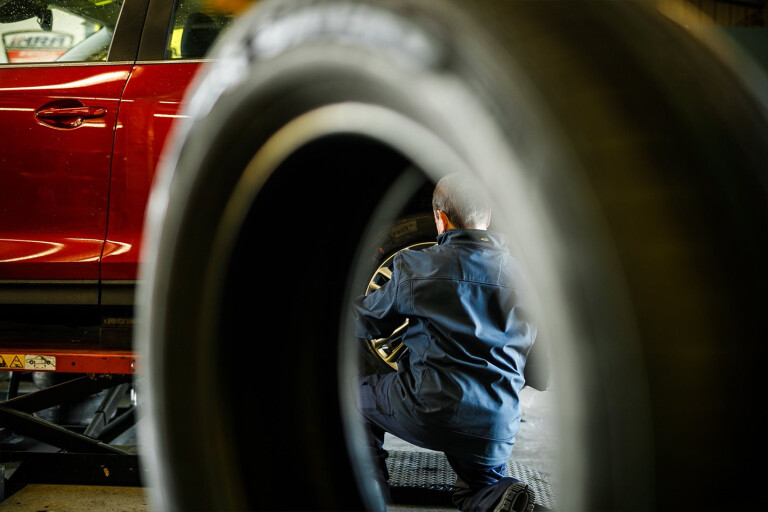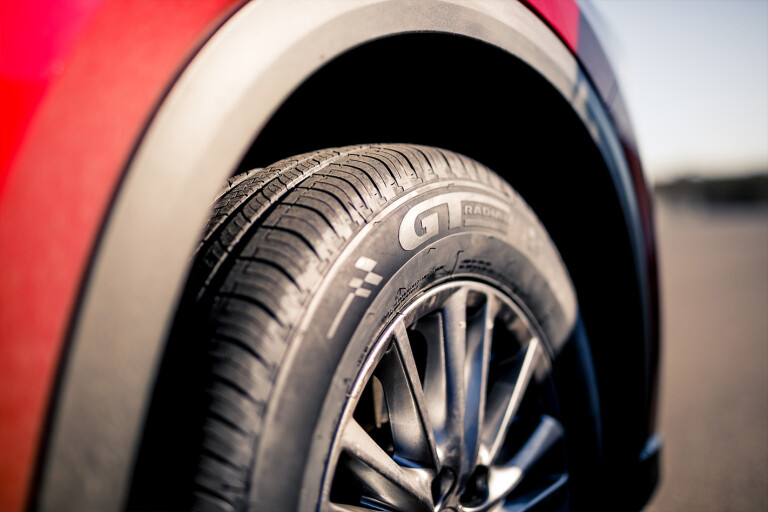
Many will be familiar with the following scenario:
It’s been a few years since you bought your car, and your tyre tread is getting worryingly low. Traction in wet weather has become sketchier than is ideal so you know you need a new set of rubber, but you when you open your wallet only a single moth flies out. Maybe two moths if you’re lucky.

And so the logical course of action is to pay your local tyre shop a visit and ask for the most affordable set of boots. It’s unlikely they’ll be the same brand and model that was originally fitted your car, but despite the completely unrecognisable name moulded into the sidewall and the bizarre tread pattern, there’s surely nothing wrong with them. If they were unsafe, the tyre shop wouldn’t sell them… right?
Don’t get us wrong, a fresh set of average tyres will definitely be better than a nearly-bald set of OE (original equipment) tyres, but that largely comes down to the rubber simply being younger and more pliable, and the tread depth being deep enough to evacuate water. But before you use that as justification for cheaping out on your next set of tyres, here are some other very important facts for you to consider.
FACTORY TYRES ARE THE BEST FIT FOR YOUR CAR
There’s a risk your eyes might glaze over and you won’t read the rest of this article. If that’s the case, just make sure you understand this: your car was designed from the outset with a certain tyre type in mind. Not necessarily a certain brand of tyre, but certainly one that fits a long list of criteria covering everything from the amount of traction provided, to comfort characteristics, durability and cost.

It’s highly unlikely that the cheapest tyres on a tyre shop’s rack will satisfy all of these criteria to the same standard – or at all – and the only way you can guarantee that your next set of rubber won’t compromise any aspect of your car is to replace your old tyres with the exact same type that it rolled out of the factory with. Peace of mind has a value of its own, after all.
FUEL ECONOMY
Changing your tyres can have a huge effect on how much rolling resistance your car has, and if your vehicle’s OE tyres offered a very low rolling resistance then it’s likely that your fuel economy could suffer if you go with a set of cheapies – or even similarly-priced tyres that claim more grip or a slightly wider tread face. If saving money is important, then preserving your car’s fuel economy by sticking with the OE rubber could possibly deliver greater savings over time than going for a cheaper set. Put simply, cheap tyres can be a false economy.
TYRE LIFE
Another feature that could impact your hip pocket is the durability of tyres. If you replace your original tyres with the same type, then you could reasonably expect the new set to last for a similar distance. Go with something different, however, and it’s anyone’s guess as to whether it’ll last longer or shorter. The UTGQ treadwear rating can give you an idea of how long your tyres will last (it’s a three-digit number that’s embossed on the tyre’s sidewall), but it’s generally only useful as a rough guide.
Generally speaking, the higher the UTGQ number the longer the tyre will last, but tyres with the same numerical rating can have differing longevity out on the road. Cheap tyre compounds could wear out much faster, meaning you’ll have to replace them much sooner than if you went with your manufacturer’s recommended rubber.

REFINEMENT
Does the aggressive tread pattern on that cheap set of tyres look sporty or cool? Perhaps, but don’t forget that the amount of road noise generated by a tyre is hugely influenced by the shapes and patterns of the grooves on its tread.
Once again, if you want your car to have the same level of refinement that it did when you bought it, get the original tyres once more.
PERFORMANCE
Most car enthusiasts will know that good tyres are critical to making a car accelerate, corner and stop to the best of its ability, but the average motorist might have the mindset that they don’t need to worry about preserving performance on their daily driver. But that’s a dangerous attitude to have, as ‘performance’ doesn’t just apply to being able to drive fast, but also to how fast your car can react to hazards.

Tyres with a cheap rubber compound could be putting you at risk of an accident by reducing your car’s ability to avoid, say, a kangaroo hopping onto the road or a heavy item falling off a truck. Often the best way of staying out of trouble is to brake as hard as possible, and your car’s safety systems will also be tuned for a tyre that has a similar level of grip to the OE items. Mess with that grip level, and safety is compromised.
RUN FLATS
This doesn’t apply to the majority of road users, but some luxury vehicles are equipped with so-called ‘run-flat safety tyres’ that demand a specific kind of construction in order to remain drivable when their air pressure drops. They don’t actually run flat because their stronger structure prevents then going flat even when the air has escaped. Run flats are often more expensive than conventional tyres, but going with a cheaper option could literally leave you stranded.

It’s quite possible that a different brand of high-quality tyre may equal or even improve on the performance and safety of the original equipment tyre fitted to your car, but once the new rubber is paid for and fitted to your car, very few, if any, tyre retailers will offer a refund if you change your mind. Often then, the lowest risk option is to stick with what the car maker recommends.
COMMENTS